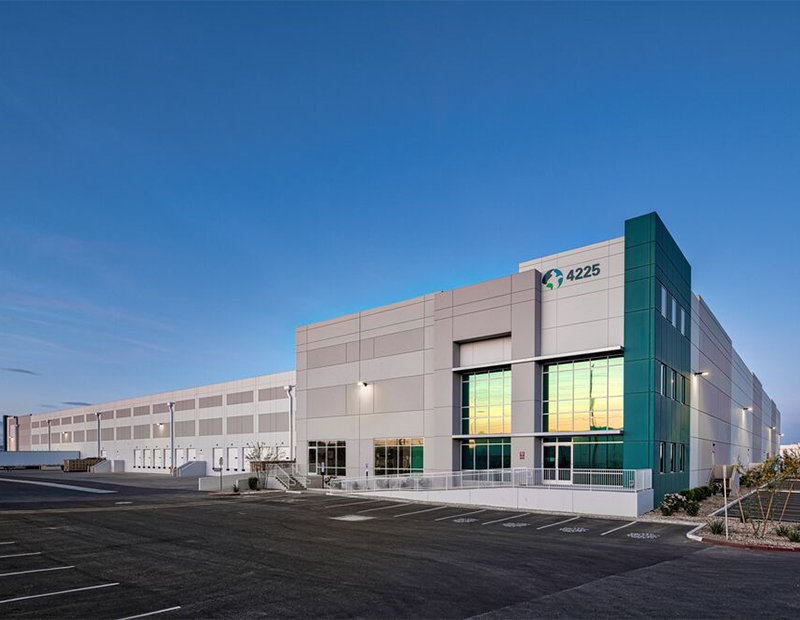Prologis to Launch LEED v4 Volume Program
The warehouse development powerhouse is the first logistics sector developer to commit to the latest version of the USGBC’s LEED Core and Shell Volume Program.

4225 W. Buckeye Road, Phoenix. The distribution center is LEED Gold Certified under the earlier iteration of the LEED Volume program. Image courtesy of Prologis
Prologis Inc. is launching the first Leadership in Energy and Environmental Design v4 for Core and Shell Volume Program for the U.S. logistics real estate sector.
READ ALSO: LEED Zero Projects From Coast to Coast
The new version features more rigorous standards than the previous LEED Volume Program, which was established in 2014. Prologis was the first logistics real estate developer to participate in the earlier program, too.
Under the LEED v4 for Core and Shell Volume Program, Prologis stated, it “will implement measurable strategies for achieving high performance in sustainable site development, water savings, energy efficiency, materials selection and indoor environmental quality for its projects in the U.S., Latin America, Canada and Italy.”
In a prepared statement, Prologis chief legal officer and ESG head Edward Nekritz said, “The Volume Program streamlines the certification process at a substantially lower cost than would be possible with individual building assessments. Since our initial participation in the 2014 program, we have saved $24 million when compared to the costs for non-Volume certification.”
In 2020, Prologis set a goal that 100 percent of new developments and redevelopments will achieve sustainable building certification each year. As of the end of 2019, Prologis had 143 million square feet of sustainably certified space across 397 projects in 18 countries.
A better way to be green
Greg Bauer, Prologis’ senior vice president of construction – Americas, explained to Commercial Property Executive that LEED volume certification was established by the U.S. Green Building Council as a way to streamline the LEED certification process by focusing on the similarities in building design, operations and delivery. “In short, it’s a way to help participants certify more buildings more efficiently.”
The LEED Volume Program was created in 2011, he continued, and uses a prototype-based approach to enable large-scale builders like Prologis to achieve consistency in green building improvements, while earning LEED certification faster and at a lower cost than would be possible with individual building reviews. Prologis is the first warehouse developer to participate in the LEED Volume Program.
Bauer noted that Prologis’ first project under this initiative will begin construction in the third quarter of this year, and that all new developments and redevelopments in the U.S. will be considered for LEED certification under this program.







You must be logged in to post a comment.